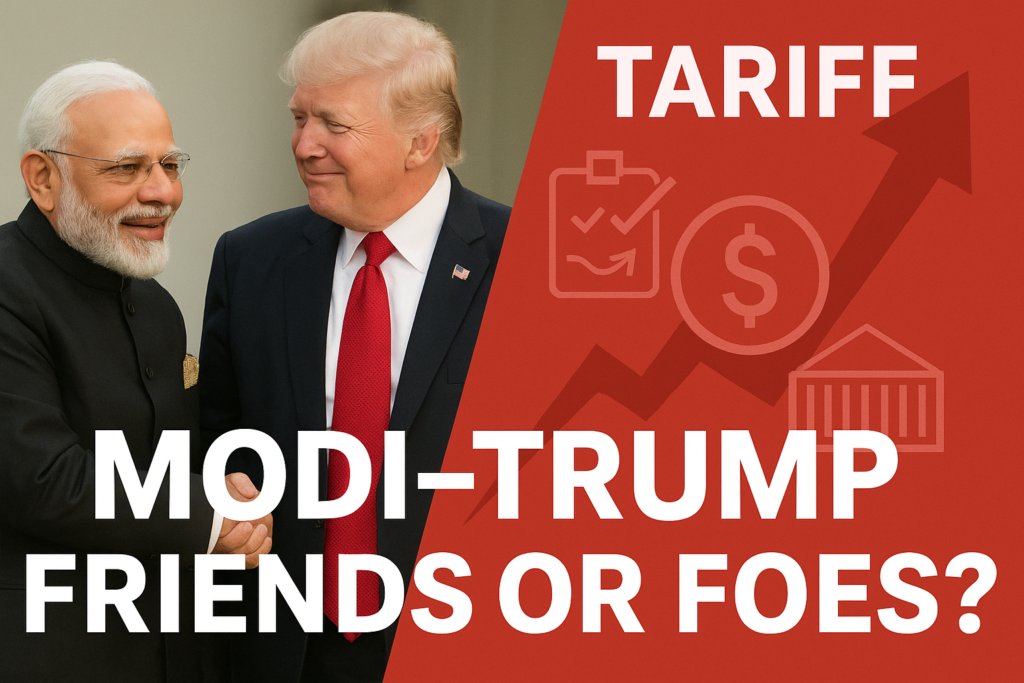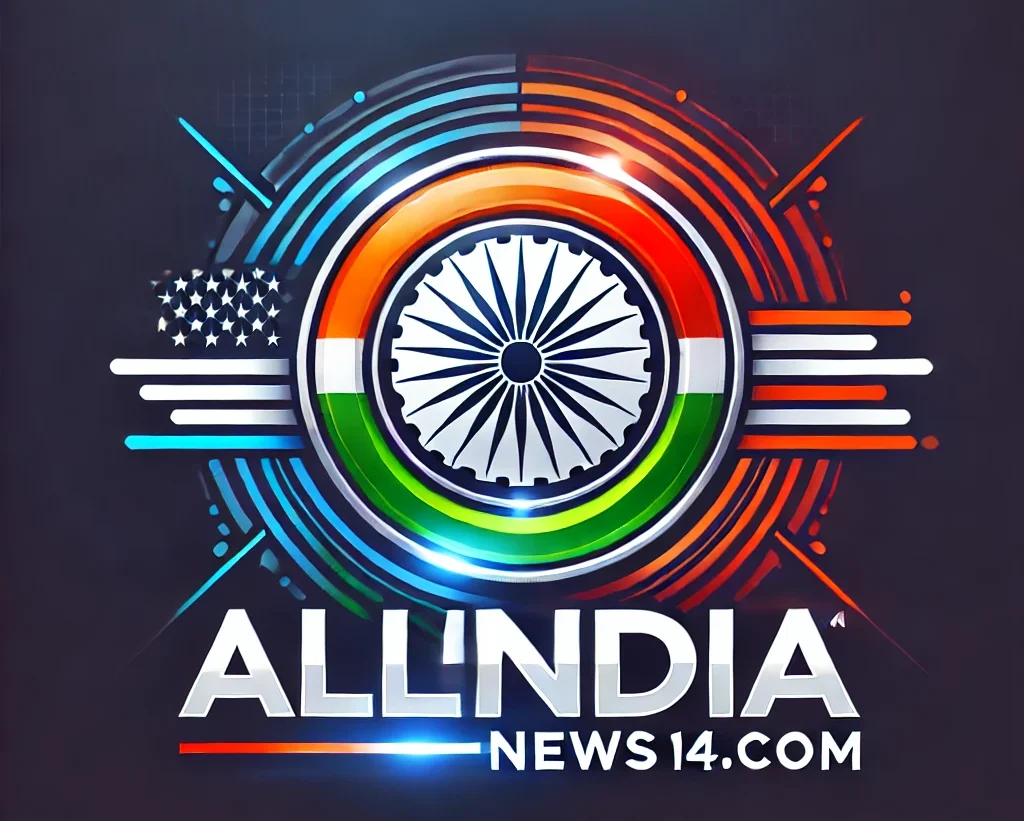Trump calls Modi a “friend” despite tariffs. PM Modi responds with optimism. Explore India–US ties, trade tensions, and the future of this partnership.
Modi–Trump Relations: Friendship Amid Tariff Tensions
Introduction: From Strained Ties to Soothing Words
The India-US relationship has always been a complicated combination of collaboration, competition, and occasional hostility. This dynamic was highlighted recently when former US President Donald Trump accused India of siding with China and Russia. In a surprising turn of events, Trump instantly changed his tone, calling to Prime Minister Narendra Modi as a “friend” and emphasizing the two countries’ positive relations.

This sudden shift from criticism to compliments has aroused debate: is this a genuine improvement in relations, or is it only a tactical respite on a longer, more difficult journey?
Trump’s Sudden Change in Tone
Just a month ago, Trump’s words had raised concerns. He accused India of moving closer to Beijing and Moscow, describing it as a defeat for Washington. These remarks, combined with a significant tariff increase, had soured relations in both capitals.
Then Trump made an abrupt U-turn. He said, “I will always be friends with Prime Minister Modi,” and that the relationship between India and the United States is “special” and “nothing to worry about.”
Such abrupt shifts in tone are characteristic of Trump’s political style: unpredictable, theatrical, and frequently intended to acquire leverage.
Modi’s Warm Yet Calculated Reply
Prime Minister Modi reacted with a message that was both courteous and thoughtfully written. According to him, he “deeply appreciates and fully reciprocates President Trump’s sentiments and positive assessment of our ties.”
But he did not stop there. Modi went on to define the India-US relationship as “very positive and forward-looking—a Comprehensive and Global Strategic Partnership.”
This response was more than just a polite thank you. It was a subtle reminder that India sees its relationship with the United States as more than just one leader’s mood swings. Modi’s emphasis on “forward-looking” and “comprehensive” signals that New Delhi is still committed to the long-term relationship.
The Tariff Storm: What Triggered the Row
A serious trade disagreement serves as the setting for this unexpected tenderness. On August 6, Trump put a 25% duty on Indian goods, which was later doubled to 50%. The decision came after India continued to acquire Russian oil despite US sanctions pressure.
This move struck to the heart of India-United States commercial relations. Higher tariffs hampered Indian enterprises’ competitiveness in the American market. For Washington, it was a way to express disapproval while defending the “America First” concept.
Many saw the tariff shock as the low point in bilateral ties in recent years.
Friendship vs. Friction: A Diplomatic Balancing Act
Regardless, neither leader is eager to entirely cut connections. Both Modi and Trump recognize the importance of maintaining personal rapport. Their public utterances demonstrate an attempt to soften the edges, even as policy issues remain unresolved.
Political experts regard this as classic push-and-pull diplomacy. Trump uses tariffs and hard language to convey severity, while Modi responds with warmth and reassurances to keep the strategic partnership alive.
This dance illustrates a deeper truth: personal chemistry can reduce tensions but cannot eliminate structural disparities.
Why the U.S.–India Relationship Matters
The United States sees India as an important partner in countering China’s expanding influence in Asia. From security collaboration to technology ties, Washington regards New Delhi as critical to a healthy Indo-Pacific.
For India, the United States is an important source of investment, technology, and defense equipment. However, New Delhi wishes to maintain “strategic autonomy”—a premise that permits it to maintain relations with different states, including Russia.
This balancing act frequently causes friction. When the United States seeks agreement on matters such as Russia or China, India prefers flexibility.
Strategic Autonomy: India’s Guiding Principle
India’s decision to continue importing Russian oil is an excellent illustration of strategic autonomy in action. Despite U.S. pressure, New Delhi determined that affordable energy imports were too crucial for its economy to abandon.
At the same time, India continues to strengthen its defense and trade ties with Washington. It is not about picking sides; it is about maximizing options.
This explains why India-US relations are both intimate and difficult. They are based on mutual benefit, but not without some friction.
Trump’s Style: Personal Diplomacy and Protectionism
Trump’s leadership style adds an extra layer of uncertainty. He thrives on dramatic remarks, unexpected policy changes, and transactional deals. His approach to India has reflected this—one moment hailing Modi as a “great friend,” the next slamming India with tariffs.
Trump’s approach differs from traditional diplomacy in that it focuses on generating pressure before providing relief. It’s a tactic for obtaining concessions, but it frequently causes confusion in the process.
Modi’s Strategy: Patience and Positive Messaging
In contrast, Modi has pursued a philosophy of patience and optimism. Rather of explicitly opposing Trump’s tariffs, he emphasizes the strength of the overall relationship.
By emphasizing terms like “forward-looking” and “comprehensive partnership,” Modi focuses attention on shared aims rather than transitory disagreements. This approach allows India to retain stability in relations while avoiding excessive escalation.
Are Relations Really Improving?
The fundamental question is whether this exchange represents a genuine improvement or simply political performance. On the surface, the words seem cordial, but the deeper issues—trade conflicts, Russia links, and tariff pressures—have yet to be handled.
Experts believe that the friendship is more about appearances than substance. Warm statements may keep the partnership from crumbling, but they cannot resolve underlying policy differences.
What Lies Ahead for India–U.S. Ties?
Looking ahead, the India-US relationship is expected to remain a mix of collaboration and dispute. Defense, technology, and counter-terrorism will see extensive integration. At the same time, disagreements over trade and global alignment will persist.
The real test will be whether both nations can distinguish between short-term conflicts and long-term strategic ambitions. If they succeed, the relationship will not only survive, but flourish.
Conclusion: Words Are Easy, Actions Are Hard
The Modi-Trump exchange highlights how delicate and complex India-US relations may be. Personal warmth can reduce tensions, but tariffs, penalties, and strategic disputes cannot be avoided.
Modi’s cautious optimism and Trump’s sudden goodwill show the delicate balance both sides must strike. For the time being, the friendship exists solely through words. But whether it will remain stable in action is the real question.
